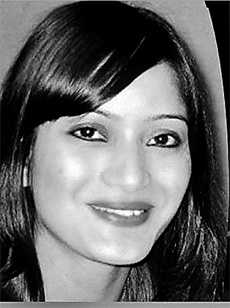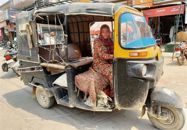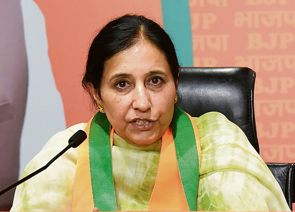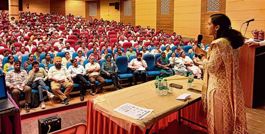
Sheena Bora
Parbina Rashid
Crime clicks. Writers love to write about it, filmmakers love to capture it on celluloid. In newspaper set-ups, crime reporters call the shots in the newsroom. But not every incident of crime receives such attention.
For instance, the news of Northeastern girls getting raped in Delhi or Northeastern boys getting beaten up do appear in newspapers and news channels. But how many such cases have inspired people to write books or make movies?
And then something like the Sheena Bora murder case happens and everybody wants a piece of it. Even before the case is solved it inspired not one, but two films. The first one, released recently, is a multi-lingual film called Dark Chocolate directed by Bengali filmmaker Agnidev Chatterjee.
When the case started unfolding, Bollywood starlet Rakhi Sawant announced the production of a film called Ek Kahani Julie Ki based on Indrani Mukerjea and her alleged involvement in the murder of Sheena Bora. Mercifully, no one ever heard of either the film or Rakhi Sawant again.
Back to Dark Chocolate, which tanked at the Box Office, came with a tagline -- “The most heinous crime of the year”.
Heinous because the case involved a media magnate and his much younger second wife, two movers and shakers of Mumbai high society.
The story has all the ingredients of a potential blockbuster — a devious mother Indrani Mukerjea, a glamorous daughter Sheena Bora who is in love with Indrani’s second or third husband Peter Mukerjea’s son. The murder of Sheena is discovered three years after it was committed. Even the former husband is seen in the crime scene along with the family driver. To give it another twist, the victim’s brother claims that his mother, the alleged murderer, tried to murder him as well.
Moushumi Kandali, a renowned writer from Assam who is teaching in New Delhi, puts the whole incident in a very different perspective. In her short story, Black Magic Women, she makes a passing reference to the Sheena Bora murder case.
The story has its origin in a report called Topography of Assam which was written in 1837 by John Makosh. Moushumi chanced upon the report in the Indian Institute of Advanced Studies, Shimla. In the report, which she has reproduced verbatim, Makosh writes, “The women of this country — they form a striking contrast to the men. They are very fair indeed, fairer than any race I have seen in India. Radiantly fair. The Assamese women have a form and feature closely approaching the European. In parts of the country, not frequented by Europeans, the women go about in public quite divested of the artificial modesty practiced by native ladies in other parts of India. Unfortunately their morality is at a very low ebb… The Assamese are, by the inhabitants of most provinces, looked upon as enchanters. The women come in for a large share of suspicion — indeed they all are believed to be enchantresses…”
Moushumi brings the story forward to the present day when the protagonist, an Assamese woman working in Delhi, receives a phone call, informing her about one such magic woman ‘from your place’ who has sent the entire country into a tizzy… what horrendous deed she has done…’ Moushumi writes, ‘She did watch the evening news. The national channels and also the regional ones. She did see the woman, Indrajaya, who had sent the country into a tizzy. She had seen the fate of an alleged cold-blooded murder. The most heinous crime a mother could commit — killing her own child. But is it a general norm? If what had been shown on TV was the truth, it was rather an exception. Why would every woman bow her head in shame? A very thought-provoking insight into the whole incident. And particularly welcome because the perception that Northeastern girls are easy still persists across India. Kudos to Moushumi!
Inner secrets
As we talk about Northeastern women being perceived as enchantresses, this piece of news comes as quite an anti-climax. A survey conducted by a doctor has revealed that 59 per cent of women of different age groups in the Northeast do not wear qualitative inner garments and that has led to the rise in the number of breast cancer patients in the region.
Cancer specialist Dr Mridushmita Das, who conducted the survey, concluded that most of the women aren’t aware of the fact that low-quality inner garments may lead to breast cancer. Most of them aren’t even bothered about such issues. Femme fatale indeed! But in this case instead of causing distress to the man who is involved with her as the dictionary meaning of the word suggests, here she is more likely to cause distress to herself.



























